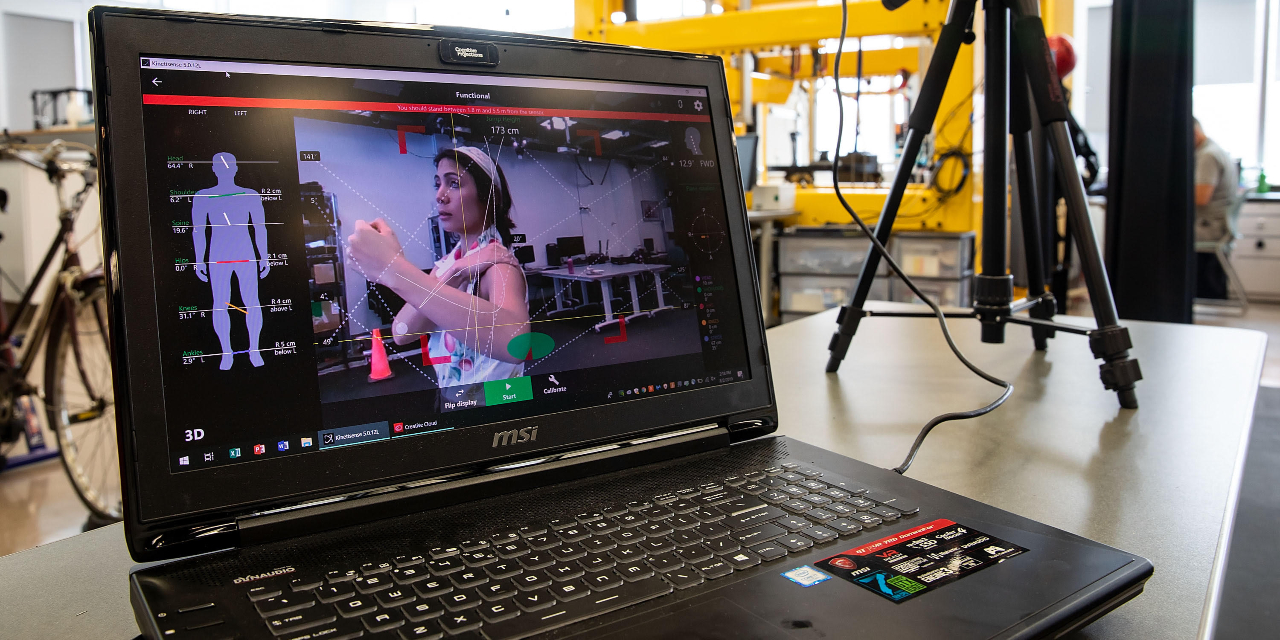A new University of Alberta project is breaking down health-care barriers in rural communities by using technology to connect patients with the clinicians and urban specialists who treat them.
"Right now, many Albertans are at a disadvantage just because of where they live. Instead of being able to visit their local clinic or hospital, rural patients have to travel long distances on their own dime to access these same services," said Courtenay Badran, project co-ordinator in the Rehabilitation Robotics Lab in the U of A's Faculty of Rehabilitation Medicine.
About 24 per cent of Albertans live outside of major cities, which means about one million people don't have access to specialized rehabilitation services in their own communities.
"Ideally, these individuals should be able to get the care they need in their own communities so they can comfortably heal at home," said Badran.
Tele-Rehab 2.0 uses a combination of wearable sensors, cameras and custom motion-capture software to collect patient data, which can then be sent to an urban hub, where a specialist can provide an accurate assessment. For example, a patient in Grande Prairie with shoulder pain can see a physical therapist in Edmonton, and have measurements such as pressure and mobility of the shoulder rotator cuff given in real time to the health-care professional.
"We're really working to address the inequality rural patients face when accessing specialized health care, while also supporting rural clinicians who often feel professionally isolated," explained Martin Ferguson-Pell, the primary investigator on the project.
Lead researcher Martin Ferguson-Pell explains the technology behind TeleRehab 2.0.
"Our goal is to integrate existing technology, develop new technology and create protocols to allow for in-depth assessments without the specialist being in the room," said Ferguson-Pell.
"We're changing how rehabilitation works in Alberta."
The project is focusing on shoulder pain, hip and knee replacements, vertigo and balance, and wheelchair special seating services. Patients will be given access to thorough assessments and communication with a specialist, as well as at-home exercises and individualized training programs.
"The current barriers rural patients face when accessing rehabilitation services means that many patients go without therapy that could improve mobility, decrease pain and vastly improve their quality of life," said Badran.
"If we make these services more accessible, it is very likely that more patients will receive the care they need to live healthier lives."
The team is also working with Kinetisense, a local Alberta technology company, to create special applications of its markerless motion capture program that will enable them to provide specialized assessments more efficiently.
"This technology will allow us to take measurements of someone by simply pointing a low-cost camera at them. Then it will measure things like their range of motion, their sway, how balanced they are, how symmetrical they are, and so on," said Ferguson-Pell, who is also producing a device that will allow the team to measure how hard the patient is pushing against the clinician during assessments for shoulder, hip and knee injuries.
The researchers are now working to recruit patients for trial runs in March 2020 with the help of remote clinicians.
For Ferguson-Pell, the objective is to prove that rehabilitation can come in different formats, not just in person.
"We want to show that specialists can have confidence in remote assessments. In the end, we want our existing health-care services to adopt these practices to better serve our rural communities. We think this is going to move the bar and really help us to support these people."
The project was supported by the U of A's SMART Network, Alberta Innovates and Pfizer.
